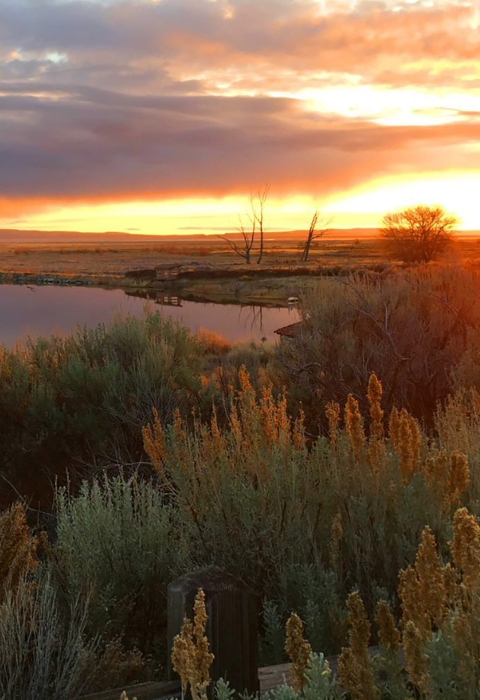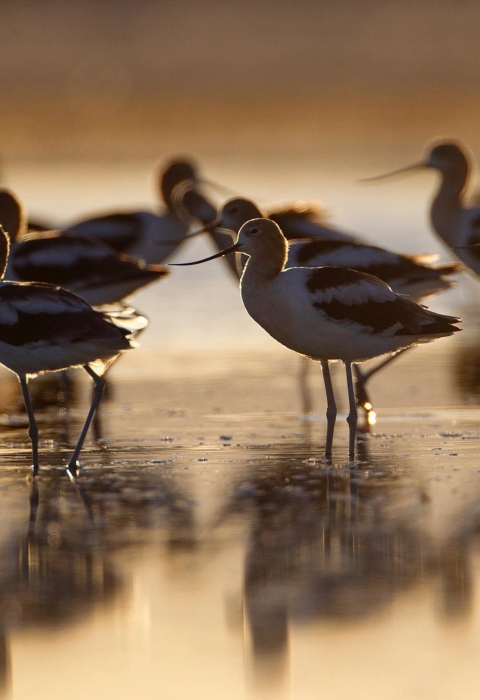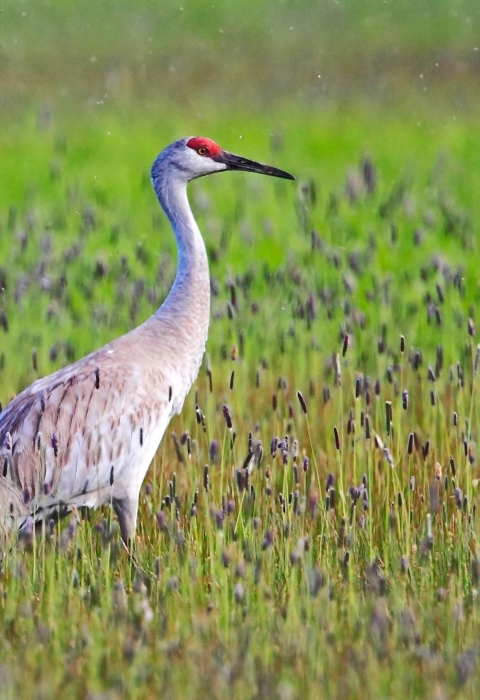- Dallas Lore Sharp (1914) remarked on Lake Malheur Bird Reservation
Visit Us
Malheur National Wildlife Refuge is located in southeastern Oregon’s high desert, at the northern end of the Great Basin. It is adjacent to Steens Mountain, from which the Wild and Scenic Donner und Blitzen River flow into the Refuge’s southern boundary. The Refuge is famous for spectacular concentrations of wildlife, which are attracted to the Refuge’s habitats and abundant water resources in an otherwise arid landscape. Visitors are drawn to Malheur’s abundant wildlife and natural resources, and the variety of recreational opportunities the Refuge provides for visitors to enjoy.
Brochures
Location and Contact Information
About Us
For thousands of years, people have been drawn to Malheur's abundant wildlife and natural resources. The story begins with the earliest evidence of people to the establishment of the Refuge. Malheur is committed to protecting these resources of plants, animals, and human interactions with each other, and the landscape over time. Learn more about the geology and geomorphology of the area, Native American uses, the era of the fur trappers, settling the land and setting aside land for wildlife, the profound effect of the Civilian Conservation Corps (CCC) at Malheur, and the establishment of the Refuge.
What We Do
The National Wildlife Refuge System is a series of lands and waters owned and managed by the U.S. Fish and Wildlife Service. Wildlife conservation is at the heart of the Refuge System. It drives everything we do from the purpose a refuge is established, to the recreational activities offered there, to the resource management tools we use. Selecting the right tools helps us ensure the survival of local plants and animals and helps fulfill the purpose of Malheur National Wildlife Refuge.
Our Species
Malheur National Wildlife Refuge was established in 1908 to protect migratory waterfowl, with an emphasis on colonial nesting species. Today, the Refuge encompasses over 187,000 acres that are disproportionately important as a stop along the Pacific Flyway, and as a resting, breeding, and nesting area for hundreds of thousands of migratory birds and other wildlife. Many of the species migrating through or breeding at Malheur are highlighted as priority species in national bird conservation plans.
Get Involved
Whether you want to further conservation, learn more about nature, or share your love of the outdoors, you’ve come to the right place. National wildlife refuges provide many opportunities for you to help your community by doing what you love. National wildlife refuges partner with volunteers, youth groups, landowners, neighbors, and residents of urban and coastal communities to make a lasting difference. Find out how you can help make American lands healthier and communities stronger while doing something personally satisfying.


